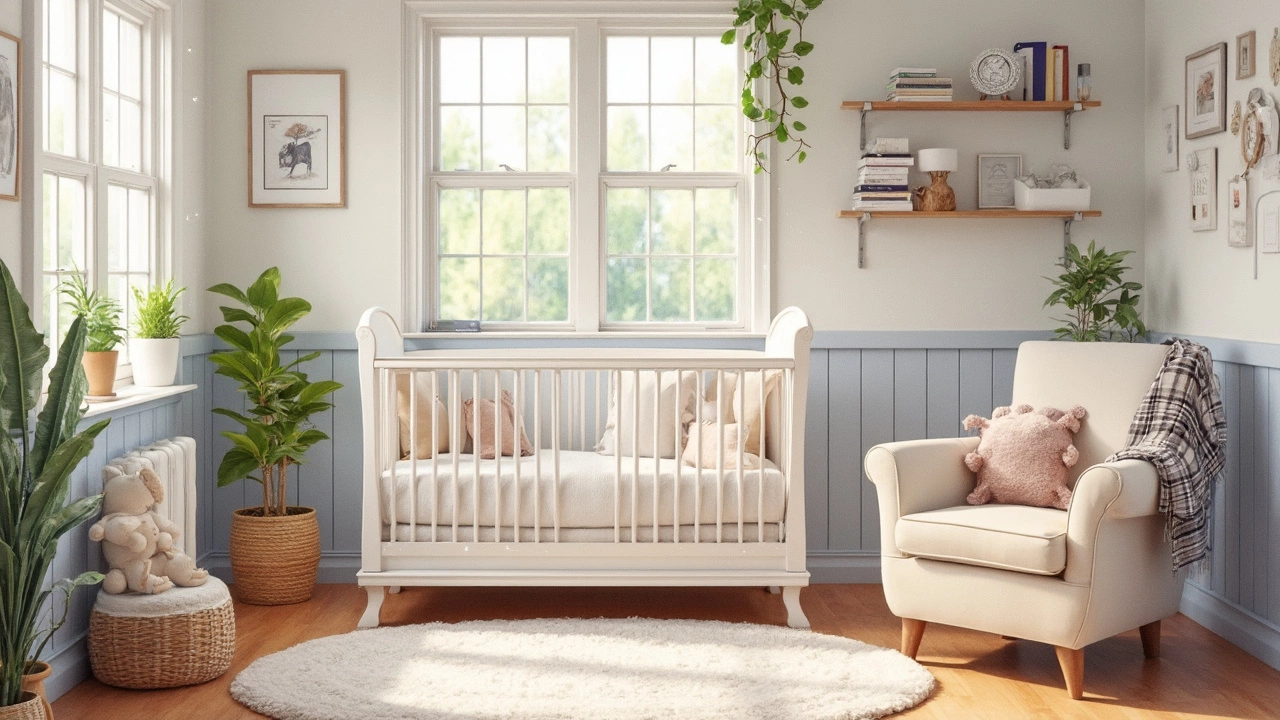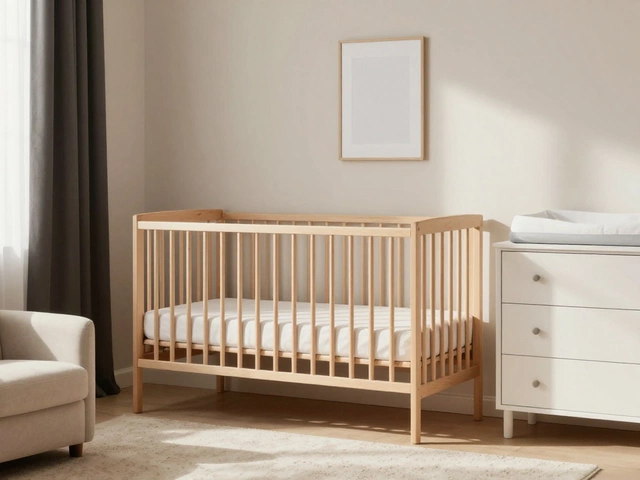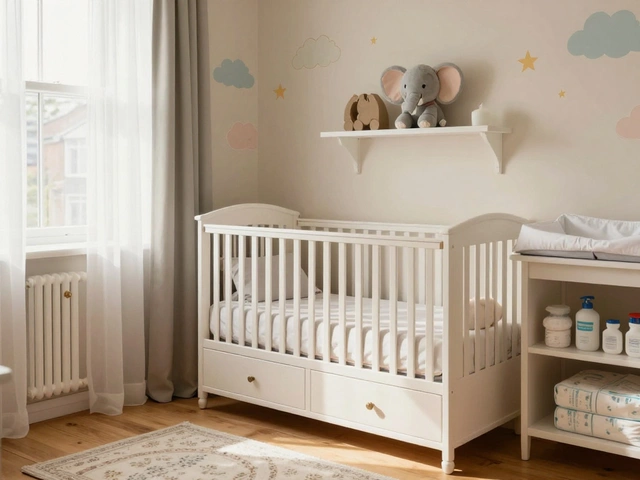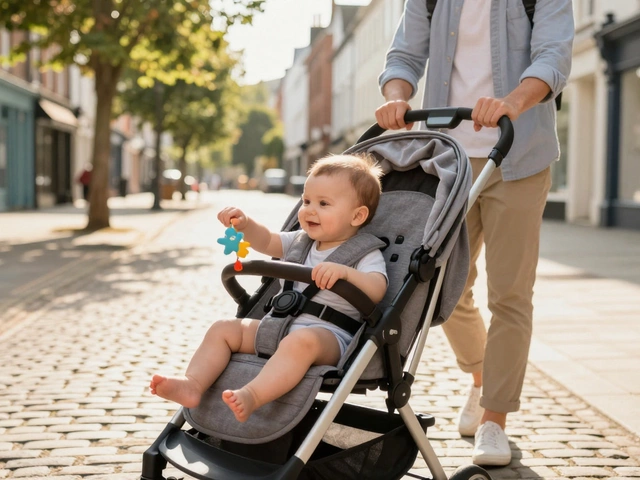
Forget endless mood boards—making a cozy nursery starts with simple choices that everyone can pull off. The first thing? Think about how you want the space to feel. Babies honestly don’t need much, but the right stuff makes those long nights and early mornings way easier.
Start with the basics: a sturdy crib, a comfy chair for feeding or rocking, and a practical changing table. You don’t have to match everything. Mixing wood tones looks great and keeps things relaxed. If space is tight, look for mini cribs and storage ottomans that double as seats.
A big thing no one tells you? Go for quality where your baby will sleep and where you’ll sit. That will matter much more than fancy décor down the road. Soft rugs help too—skip scratchy ones and check if they’re machine-washable. Spit-up happens.
- Picking the Right Furniture for Comfort
- Lighting and Color Secrets for Warmth
- Textures and Fabrics that Soothe
- Personal Touches and Smart Storage
Picking the Right Furniture for Comfort
The first thing you want to lock in for any cozy nursery is the right furniture. It isn’t about filling every corner—it’s about picking what you’ll use every day and making sure it feels good for you and your baby. Cribs should meet current safety standards, which means slats no more than 2 3/8 inches apart, a firm mattress that fits snug, and no bulky bumpers or loose bedding. Modern convertible cribs are a lifesaver since they can turn into toddler beds down the line. If you’re tight on space, mini cribs or cribs with built-in drawers free up precious room.
Let’s talk about the chair. You’ll spend more hours here than you think, especially during night feeds. A basic glider or rocker with padded arms and easy-to-clean fabric can make a huge difference. Look for one that lets your feet touch the floor so you’re not left awkwardly perched while holding your little one. Recliners with a subtle glide also get the job done—no need to splurge unless you really love the look.
A changing table sounds optional, but you’ll want a secure spot that keeps all diapers and wipes close. Plenty of parents use a regular dresser with a changing pad on top. This way, the furniture grows with your child after the diaper days are done. Check for smooth-gliding drawers and don’t underestimate the need for storage bins—they turn chaos into calm when you’re grabbing that onesie at 3 a.m.
- Go for furniture with rounded edges to avoid bumps as your baby grows curious and mobile.
- If you’re buying secondhand, double-check for recalls and sturdy hardware. Safety always beats style.
- Keep the room layout practical—leave enough space for you to walk around safely, even in the dark.
Getting these furniture basics right is what makes everything else in your nursery work better. You don’t need a huge budget, just a plan that puts comfort and everyday use front and center.
Lighting and Color Secrets for Warmth
Lighting might not be the first thing you think about, but it changes the vibe of a nursery instantly. Super bright overhead lights can make the room feel cold and hospital-like, which isn’t comforting for a baby at all. Instead, layer your lighting—combine a soft ceiling light, a dimmable lamp, and a tiny nightlight for those late-night diaper changes. Nursery design experts say dimmable bulbs are a total game-changer because you can control the mood without waking everyone up at 3 a.m.
Warmer white bulbs (look for 2700K or below on the box) hit that perfect cozy glow. Skip the blue-tinted ones since they actually signal to your brain (and baby’s) that it’s time to wake up. Also, blackout curtains are a lifesaver. They block street lights and early sun, making it easier for babies to nap. One recent poll found babies in rooms with blackout curtains slept an average of 40 minutes longer during the night.
When it comes to color, pastels are still a safe bet—but it’s more about the undertones than the color family. Soft, warm undertones (think greige instead of plain gray, or dusty peach instead of orange) make even the smallest space feel inviting. Bold colors can work too, just make sure they don’t get too wild around the crib area since bright reds and neon shades can feel chaotic and hard for babies to wind down.
- Choose soft, warm colors for walls and bigger pieces of furniture.
- Add pops of color with toys, books, or a play mat—it’s easy to swap them out later.
- Use blackout curtains for both naps and nightly sleep.
- Try a small, soft-light lamp and avoid any direct overhead spotlighting near the crib.
- If you use nightlights, keep them at a low brightness and choose amber tones over blue or white.
Here’s a quick breakdown of the lighting and color tricks parents swear by:
| Tip | Why It Works |
|---|---|
| Dimmable lighting | Lets you control brightness during sleepy hours |
| Warm bulbs (2700K or under) | Makes the room feel like a cozy nest |
| Soft, warm wall colors | Creates a calming, welcoming space |
| Blackout curtains | Babies sleep longer and better |
Don’t stress about matching every color or light source perfectly. Every cozy nursery looks a bit different. Aim for that gentle glow and soft color palette, and you’ll hit the sweet spot for both comfort and calm. The right cozy nursery lighting can make late-night feeds and early mornings a lot more bearable—for both of you.

Textures and Fabrics that Soothe
If you want instant cozy in your baby's room, focus on what you can touch. Babies spend a ton of time lying down or being held, so those everyday fabrics can make a huge difference in comfort and calmness. The trick isn’t just soft stuff—it’s about choosing the right kind that also handles real life (hello, spit-up and diaper mishaps).
Start with crib sheets. Go for 100% organic cotton or bamboo. Why? Both are super breathable, gentle on new skin, and cut down risks of overheating. According to the American Academy of Pediatrics, breathable sheets can help with temperature regulation and are less likely to cause irritation or rashes. Changing sheets at midnight is bad enough without worrying if they’re scratchy, right?
Your nursery probably needs more than one blanket, but skip anything too heavy or fluffy in the crib. Safe sleep guidelines say bare is best for sleep, but you can toss a soft, textured blanket over your feeding chair or use it for tummy time. Muslin and jersey knit blankets wash easily and only get softer over time. And those chunky knit blankets that show up everywhere? They look cute but shed and can be a safety hazard for babies—save them for your Instagram, not everyday use.
Window treatments matter, too. Blackout curtains made from thick, tightly woven fabric help block light and muffle outdoor noise, which can mean better naps. Roman shades lined with blackout material work well in small spaces because they sit close to the window.
On the floor, play mats and area rugs can completely change how the room feels. Make sure they’re labeled "low pile" or "flat weave" and check for Oeko-Tex certification, which means they’ve been tested for harmful substances. Machine-washable rugs are lifesavers; little accidents are going to happen and you’ll want easy cleanup. According to a recent survey by BabyCenter, 61% of parents said they regretted buying fancy, high-maintenance rugs for their baby's room.
- Stick to natural fibers like cotton, linen, or wool when possible.
- Don’t forget laundry: if it can’t be washed easily, think twice.
- If allergies are a concern, use hypoallergenic mattress covers and pillow protectors, even if your baby’s not sleeping with a pillow yet.
Here’s a quick breakdown of common nursery fabrics and what makes them practical:
| Fabric | Best For | Pros | Cons |
|---|---|---|---|
| Cotton | Crib sheets, blankets, clothes | Breathable, soft, easy to wash | May wrinkle easily |
| Bamboo | Sheets, swaddles | Hypoallergenic, temperature regulating | Can be pricey |
| Muslin | Swaddles, lightweight blankets | Gets softer with each wash, airy | Not very warm for cold months |
| Fleece | Blankets, soft toys | Warm, cozy | Can trap heat—use with care |
The bottom line? Layers of different, washable textures make a nursery functional and super comfy for both you and your baby. Simple swaps can turn the space into a true cozy nursery, and you won’t be panicking when someone has a mess or spits up for the tenth time that day.
Personal Touches and Smart Storage
Cozy nurseries always feel like they really belong to your family—even if you rent, even if the space is tiny. Personal touches can make all the difference. Hanging up baby photos, framed handprints, or a keepsake quilt instantly gives the room real-life warmth. Decals are a mess-free way to add personality, and you can swap them out as your child grows.
Monogrammed blankets or a simple growth chart do more than look cute—they become childhood memories. Even a favorite stuffed animal on the shelf can make a space feel loved and lived in. A cool fact: research in child psychology shows that personal and familiar objects in a nursery help babies build early trust and attachment.
Now, storage is where most parents stumble, but smart storage saves your sanity. Instead of shoving baskets in corners, make use of vertical space and hidden spots. Wall shelves above the changing table or crib keep the basics—wipes, diapers, creams—right where you need them but up and out of baby’s reach.
- Use storage bins inside the closet for outgrown clothes and next-sizes-up. Clear bins are best—you won’t have to open everything to find what you need.
- Under-crib drawers or rolling carts can avoid late-night toy-scrambling. And soft bins can hide the daily toy mess in seconds.
- Labeling works wonders, especially at three in the morning. Stickers or chalkboard tags do the trick.
Don’t forget that the trend is toward less stuff, not more. According to 2024 data from the National Association of Professional Organizers, over 60% of parents feel less stressed when they only keep nursery items actually used weekly. It’s okay to purge extra gifts or doubles you’ll never open.
| Smart Storage Solution | Why It Works |
|---|---|
| Wall-Mounted Shelves | Saves floor space, keeps clutter up high |
| Clear Bins | Easily see contents, makes organizing fast |
| Under-Crib Storage | Uses every inch, perfect for extra bedding or diapers |
| Soft Toy Bins | Quick clean-up, safe for babies to reach |
One last thing: If you’re choosing furniture, pick dressers or storage benches that’ll work as your baby becomes a toddler. You’ll use them for years and get the most out of your money. Remember, creating a cozy nursery is more about thoughtful touches and smart storage than piling in everything you see online. If you keep it practical, you’ll always love the look—and so will your baby.
The real trick? Make the cozy nursery work for you, not the other way around.






